The Surprisingly Wild History of Gift-Giving (and Why We Still Do It)
From cavemen trading tools to Amazon wish lists, discover how gift-giving evolved — and why it’s one of humanity’s oldest and most charming instincts.
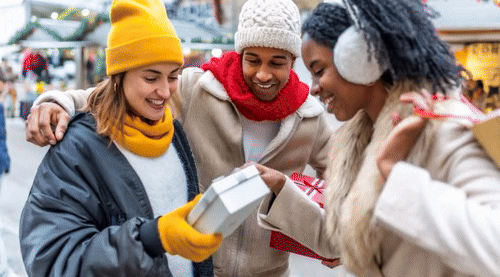

Long before wrapping paper, Amazon wish lists, and “Sorry this arrived late, it’s been in my cart since October,” humans were already doing the one thing that still defines us today: giving stuff to each other.
It turns out, gift-giving isn’t just a modern social nicety — it’s one of the oldest survival strategies in the book.
Cavemen Were Basically the First Gift Influencers
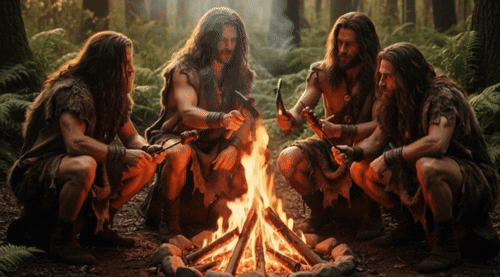

Prehistoric humans sharing food and tools as early gifts
Some 40,000 years ago, early humans were swapping food, tools, and shiny objects not for birthdays or anniversaries (there was no Hallmark back then), but to survive. Sharing wasn’t about manners — it was about not dying.
Archaeologists have even found ornaments and tools buried with prehistoric humans, suggesting our ancestors were already into the idea of offering something meaningful… even to the afterlife. The first “just because” gift, if you will.
Ancient Civilizations: The OG Power-Gifting Era
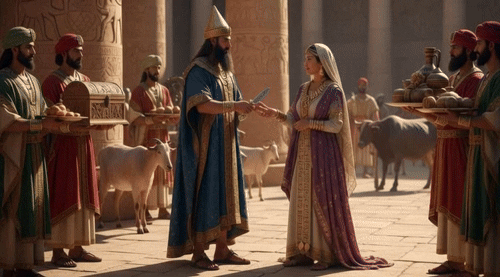

Ancient Mesopotamian rulers exchanging gifts of gold and livestock.
Fast-forward to Mesopotamia (around 3000 BCE), where kings and queens turned gift-giving into high-stakes diplomacy. Gold, livestock, entire cities — nothing said “thanks for the alliance” like a few dozen sheep and a chariot.
The Egyptians perfected it with pharaohs gifting jewels and horses to their loyal subjects (essentially the world’s first luxury loyalty program). Meanwhile, the Greeks formalized hospitality with xenia — the polite art of gifting your guest so they wouldn’t murder you in your sleep.
The Romans? They took it seasonal — handing out candles and figurines during Saturnalia, their winter festival that looked suspiciously like the prototype for Christmas.
The Middle Ages: Religion, Royalty, and Really Fancy Armor


Medieval nobles exchanging jeweled gifts in a royal court.
By the medieval period, gifts became political and holy all at once. The Church collected offerings, nobles exchanged jeweled daggers and tapestries, and the story of the Three Wise Men turned gift-giving into a Christmas staple.
In China and Japan, it was a bit more elegant — Confucian ideals and social harmony meant gifts of silk, tea, or intricate ceramics, each wrapped in meaning (and sometimes actual silk).
The Renaissance: The Birth of the Thoughtful Gift
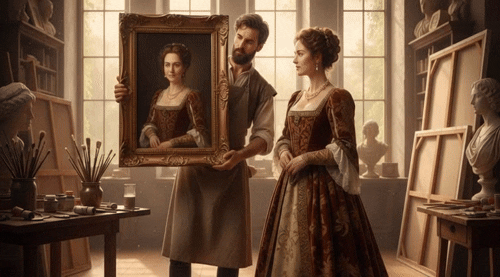

Renaissance portrait being gifted in an ornate frame.
Somewhere around the 16th century, things got personal. Artists painted portraits as presents, lovers exchanged poems, and travelers brought back souvenirs — the Japanese omiyage tradition.
For the first time, gifts weren’t just about politics or religion — they were about you.
The Industrial Age: Enter the Shopping Bag
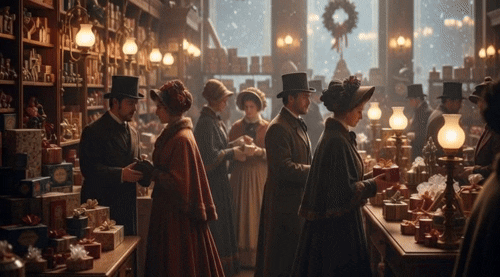

Victorian shoppers buying Christmas gifts in an early department store.
By the 1800s, industrialization made it possible to mass-produce not only products but also the concept of generosity.
Department stores like Macy’s realized something huge: if people love giving gifts, they’ll love buying them even more.
Christmas turned commercial, Valentine’s Day became mandatory, and birthdays stopped being just “another year older” and started being “another excuse for presents.”
The 20th Century: Science, Sociology, and Secret Santas
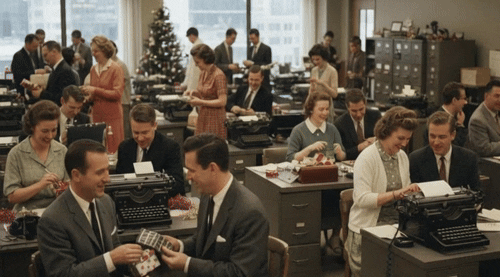

Office Secret Santa gift exchange in the mid-20th century.
Anthropologist Marcel Mauss dropped a cultural bomb in 1925 with The Gift, explaining that giving, receiving, and reciprocating are the invisible threads that hold society together. (Translation: if someone gives you a gift, you now owe them one. Forever.)
As globalization spread, so did holidays and gift traditions — from Pacific Island potlatches to Western wedding registries.
And let’s not forget: by the time “Secret Santa” entered the office lexicon, we were officially hooked.
The Present Day: Ancient Instincts, Prime Delivery


Modern person unboxing online gift delivery at home.
Fast-forward to 2025: Americans now spend nearly a trillion dollars a year on gifts — not counting the last-minute panic orders at 2 a.m.
The instinct remains the same as it was in those prehistoric caves: gifts mean connection, status, appreciation, and a little bit of “see how thoughtful I am?”
From NFTs to charity donations, digital subs to good old-fashioned candles, the forms have changed — but the impulse hasn’t. We give because it makes us human. And maybe, just maybe, because it feels really good to watch someone’s face light up when they open the box.
From Mammoth Bones to Amazon Boxes
Across millennia, gift-giving has evolved from survival tactic to love language — proof that generosity is one of humanity’s favorite traditions (and also one of its most fun).
If this little trip through time made you go “oh wow,” send this to that friend who loves random facts and good stories — because sharing this is technically a gift, too. 🎁


